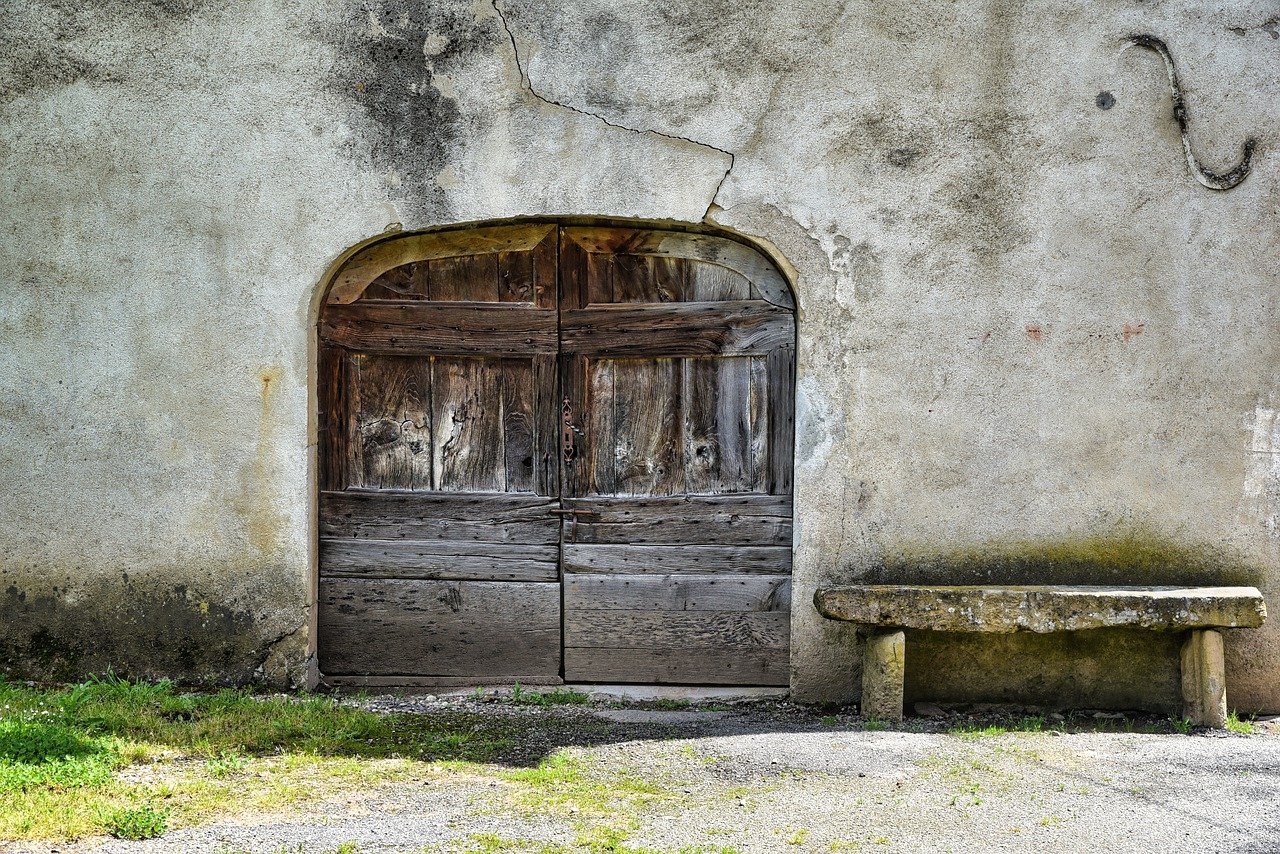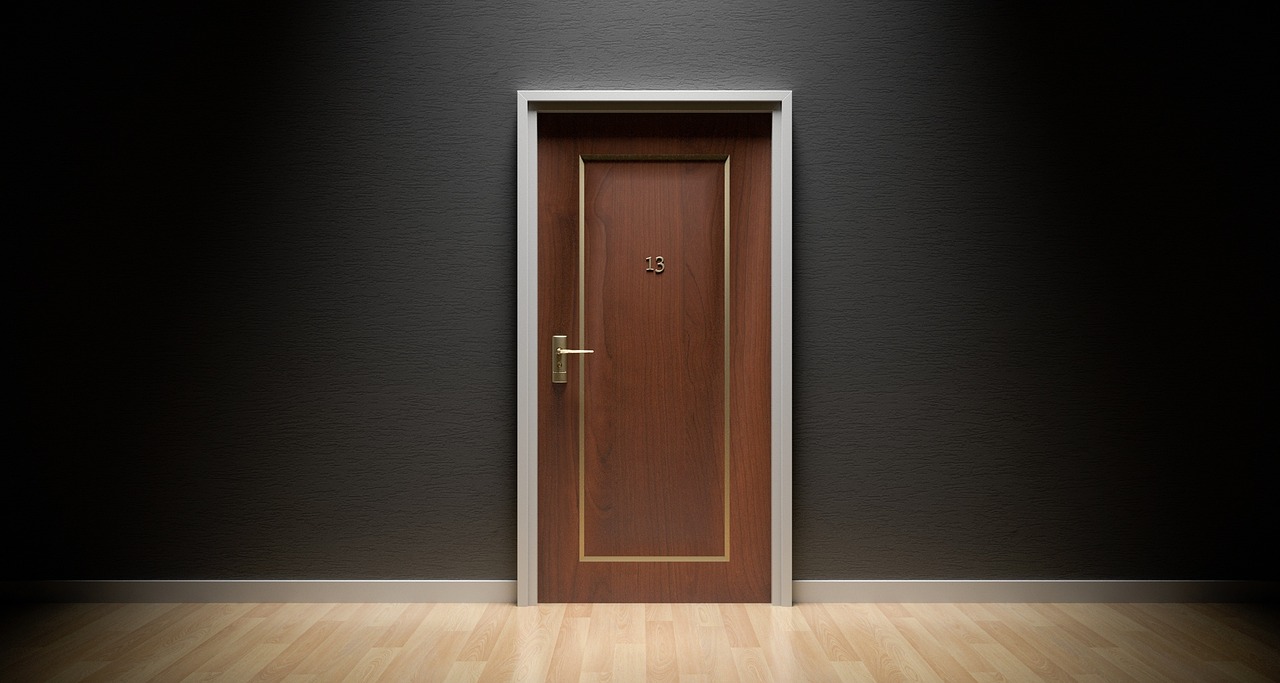How to Build a Wooden Screen Door: A Guide
Building a wooden screen door is not just a project; it’s an opportunity to enhance your home’s charm while ensuring fresh air flows through your living space without the annoyance of pesky bugs. Whether you’re a seasoned DIY enthusiast or a novice looking for a rewarding challenge, this guide will walk you through every step of the process. From selecting the right materials to the final installation, we’ve got you covered. So, grab your tools and let’s get started on creating a stunning wooden screen door that will not only serve its purpose but also add a touch of elegance to your home.
When it comes to building a wooden screen door, the materials you choose can make or break the project. You want to select wood that is not only durable but also aesthetically pleasing. Common choices include cedar, pine, and fir, each offering unique benefits. Cedar, for instance, is naturally resistant to rot and insects, making it an excellent choice for external applications. Pine is more budget-friendly but may require extra treatment to withstand the elements. Fir, on the other hand, is known for its strength and stability, which is essential for a sturdy door. Along with wood, you’ll need hardware such as hinges, a latch, and possibly a handle, all of which should be rust-resistant to ensure longevity.
Before diving into the construction process, it’s crucial to gather all the necessary tools. Having the right equipment on hand can save you time and frustration. Here’s a quick rundown of what you’ll need:
- Measuring tape: For accurate dimensions.
- Miter saw: For precise cuts.
- Drill: To create holes for screws.
- Level: To ensure your door hangs straight.
- Clamps: To hold pieces together while assembling.
- Screwdriver: For fastening hardware.
Having these tools ready will streamline the process and help you achieve a professional-looking result.
Accurate measurements and precise cuts are the backbone of a well-fitted screen door. Start by measuring the door frame where the screen door will be installed. It’s essential to measure both the height and width at multiple points to account for any inconsistencies in the frame. Once you have your measurements, mark them clearly on the wood. Use a square to ensure your cuts are straight, and take your time. Remember, “measure twice, cut once” is a mantra worth following!
A miter saw is a fantastic tool for making angled cuts, which can be particularly useful when creating the frame of your screen door. To use a miter saw effectively, first, adjust the angle setting according to your needs. Always wear safety goggles and keep your hands clear of the blade. When you make the cut, let the saw do the work—don’t force it through the wood. This not only enhances accuracy but also prolongs the life of your tool.
When it comes to cutting and shaping wood, both hand tools and power tools have their advantages. Hand tools, like hand saws and chisels, offer greater control and are often quieter, making them ideal for detailed work. However, power tools, such as circular saws and jigsaws, can save you time and effort, especially for larger cuts. The choice between the two often boils down to personal preference and the specific requirements of your project.
After cutting the wood to size, it’s time to assemble the frame. Start by laying out the pieces on a flat surface. Use clamps to hold the corners together while you drill pilot holes and insert screws. This method not only secures the frame but also prevents the wood from splitting. Ensure everything is square by checking the diagonals; if they match, you’re on the right track. Once assembled, give your frame a good sanding to smooth out any rough edges.
Now that your frame is ready, it’s time to choose and install the screen material. The right screen will not only keep bugs out but also allow for airflow. Fiberglass screens are popular for their durability and ease of installation, while aluminum screens are more rigid and resistant to dents. Consider your needs and preferences when making this choice. Once selected, cut the screen material to size, leaving a little extra around the edges for securing it to the frame.
Here’s a quick comparison of popular screen materials:
| Material | Benefits | Drawbacks |
|---|---|---|
| Fiberglass | Durable, easy to install | Can tear if not handled carefully |
| Aluminum | Strong, resistant to dents | Can corrode over time |
| Pet Screen | Extra durable for pets | Thicker, may restrict airflow |
To ensure the screen remains taut and secure, you can use staples or a spline system. If using staples, apply them every few inches along the edges of the screen. For a spline system, place the screen over the frame, lay the spline on top, and press it into the frame’s groove. This method not only secures the screen but also gives it a clean, finished look.
With the screen installed, it’s time for the finishing touches. Consider painting or staining the wood to match your home’s exterior. This not only enhances the visual appeal but also adds a layer of protection against the elements. Once dry, install the door using rust-resistant hinges, ensuring it swings freely and aligns properly with the doorframe. Voila! You now have a beautiful wooden screen door that adds character to your home while keeping it bug-free.
Q: How long does it take to build a wooden screen door?
A: Depending on your skill level and the complexity of the design, it can take anywhere from a few hours to a couple of days.
Q: What type of wood is best for a screen door?
A: Cedar is often preferred due to its natural resistance to rot and insects, but fir and pine are also good options.
Q: Can I install a screen door on my own?
A: Absolutely! With the right tools and instructions, it’s a manageable DIY project.
Q: How do I maintain my wooden screen door?
A: Regularly check for any damage, clean the screen, and reapply paint or stain as needed to keep it looking fresh.

Choosing the Right Materials
When it comes to constructing a wooden screen door, the choice of materials is pivotal. Not only do the materials impact the door's durability, but they also play a significant role in its aesthetic appeal. Imagine opening your door to a beautiful, handcrafted screen that complements your home’s style; it can truly elevate the overall look and feel of your space. So, what should you consider when selecting the right materials?
First and foremost, the type of wood you choose can make or break your project. Cedar, redwood, and pine are popular choices among DIY enthusiasts. Cedar, for example, is naturally resistant to moisture and pests, making it an excellent option for outdoor use. Redwood, on the other hand, offers a stunning natural color and grain, but it can be more expensive. Pine is a budget-friendly alternative that can be stained or painted to achieve your desired look. Each wood type has its unique characteristics, so consider your budget and the climate in which you live.
Next, let’s talk about the hardware. The hinges, handle, and any additional hardware should be durable and weather-resistant. Stainless steel or galvanized hardware is ideal as it won't rust or corrode over time. Investing in high-quality hardware means you won't have to worry about replacing it anytime soon. Additionally, the choice of screen material is crucial. You can opt for fiberglass, which is flexible and less prone to denting, or aluminum, which offers sturdiness and durability. Each type has its pros and cons, so weigh your options carefully.
To summarize the best materials for your wooden screen door:
| Material Type | Pros | Cons |
|---|---|---|
| Cedar | Moisture resistant, pest resistant | Can be more expensive |
| Redwood | Beautiful grain, durable | Higher cost |
| Pine | Cost-effective, versatile | Less durable than cedar or redwood |
| Fiberglass Screen | Flexible, resistant to denting | Can be less durable in extreme conditions |
| Aluminum Screen | Sturdy, long-lasting | Can be prone to dents |
By carefully selecting your materials, you set the foundation for a screen door that not only functions well but also enhances the beauty of your home. Remember, the right choices can transform a simple door into a stunning entryway that welcomes guests with open arms.

Essential Tools and Equipment
Before diving into the exciting world of building your own wooden screen door, it's crucial to gather the that will make your project not only easier but also more enjoyable. Imagine trying to bake a cake without measuring cups or a whisk—frustrating, right? The same goes for woodworking! Having the right tools at your disposal can make all the difference between a smooth process and a hair-pulling experience.
First on the list is a measuring tape. Precision is key when it comes to woodworking, and a measuring tape will help you get the exact dimensions needed for your screen door. Pair this with a square to ensure that your angles are just right. After all, nobody wants a door that’s more crooked than a funhouse mirror!
Next, you’ll need a reliable saw. Depending on your comfort level and the complexity of your design, you might opt for a miter saw for angled cuts or a simple hand saw for straight cuts. Each has its perks, and choosing one will largely depend on your skill level and the tools you have on hand. If you’re a novice, a miter saw can make your life much easier, providing clean, precise cuts that will leave your door looking professional.
Speaking of precision, don’t forget about a drill. This tool is essential for creating pilot holes and driving screws into the frame. Trust me, trying to hammer screws into hard wood is a recipe for disaster. A drill will save you time and keep your wood from splitting, ensuring your screen door is both sturdy and visually appealing.
Additionally, you’ll want a level to make sure that your door hangs straight once installed. Nothing screams “amateur” more than a door that swings open on its own because it’s not properly leveled. A small investment in a good level can save you from future headaches!
Now, let’s talk about some optional yet handy tools. A router can add decorative edges to your door, giving it a unique touch that sets it apart from standard designs. If you're feeling particularly adventurous, consider investing in a jigsaw for more intricate cuts. This tool opens up a world of creative possibilities, allowing you to cut out shapes or curves that would be difficult with a traditional saw.
Finally, don’t forget the safety gear. Protecting yourself while working is non-negotiable. At minimum, you should wear safety glasses to shield your eyes from sawdust and debris, and ear protection if you’re using power tools for extended periods. Your health and safety come first!
To sum it up, here’s a quick table of essential tools you’ll need:
| Tool | Purpose |
|---|---|
| Measuring Tape | For precise measurements |
| Square | To ensure right angles |
| Miter Saw | For accurate angled cuts |
| Drill | For creating pilot holes and driving screws |
| Level | To ensure door hangs straight |
| Router | For decorative edges |
| Safety Gear | To protect eyes and ears |
With these tools in hand, you're well on your way to creating a beautiful wooden screen door that will not only serve its purpose but also enhance the aesthetic appeal of your home. Remember, the right tools are like a chef's secret ingredients; they can elevate your project from good to absolutely fantastic!

Measuring and Cutting Wood
When it comes to building your wooden screen door, measuring and cutting wood accurately is absolutely essential. Think of it like baking a cake; if you don’t measure your ingredients properly, the end result might not be what you hoped for! The same principle applies here. To ensure a snug fit for your door, you need to take precise measurements before you even think about picking up a saw.
Start by measuring the height and width of the door frame where the screen door will be installed. It’s wise to take multiple measurements at different points, especially if your frame isn’t perfectly square. Once you have your measurements, jot them down. A good rule of thumb is to subtract about 1/4 inch from both the height and the width. This adjustment allows for any slight variances in the frame and ensures the door swings freely without sticking.
Now that you have your measurements, it’s time to cut the wood. Using a miter saw is highly recommended for this task. A miter saw allows for precise angled cuts, which is crucial when creating the frame for your screen door. If you've never used one before, don't worry! Just remember to follow the manufacturer's instructions and always wear safety goggles to protect your eyes from sawdust.
Here’s a quick breakdown of the steps you’ll want to follow when cutting your wood:
- Secure the wood: Make sure the wood is firmly clamped down to prevent any movement while cutting.
- Double-check measurements: Before making any cuts, double-check your measurements one last time. It’s better to take a little extra time now than to make a mistake!
- Make the cut: Align the blade with your marked line and make the cut smoothly and steadily.
- Sand the edges: After cutting, sand down the edges to eliminate any splinters and achieve a clean finish.
After cutting the pieces for your frame, it’s a good idea to lay them out on the ground or a flat surface to visualize how they will fit together. This step allows you to see if any adjustments are needed before you start assembling. Remember, patience is key here, and taking the time to measure and cut accurately will save you a lot of headaches down the road.
Finally, if you’re considering using hand tools instead of power tools, know that while they can be more labor-intensive, they offer a level of control that some DIY enthusiasts prefer. However, for speed and efficiency, power tools like a miter saw can’t be beaten. Choose the method that you’re most comfortable with, and don’t be afraid to ask for help if you’re unsure about anything!
Q: What type of wood is best for a screen door?
A: Cedar and pine are popular choices due to their durability and resistance to warping.
Q: Can I use a hand saw instead of a miter saw?
A: Yes, you can use a hand saw, but it may require more effort and time to achieve the same level of precision.
Q: How do I know if my measurements are accurate?
A: Always measure twice and cut once! Taking multiple measurements at different points helps ensure accuracy.
Q: What should I do if my door doesn’t fit?
A: If your door doesn’t fit, you may need to trim it down slightly or adjust the frame. Always check the alignment first.

Using a Miter Saw
When it comes to building a wooden screen door, precision is key, and that's where a miter saw shines. This powerful tool is designed to make angled cuts with incredible accuracy, which is essential for fitting your door frame together seamlessly. Imagine trying to assemble a jigsaw puzzle where the pieces don't quite fit—frustrating, right? That's what happens when your cuts are off. With a miter saw, you can avoid that headache and ensure that every piece of wood fits together like a glove.
Before you dive in, it’s important to familiarize yourself with the different types of miter saws available. There are compound miter saws, which allow you to make bevel cuts, and sliding miter saws, which can handle wider boards by sliding the saw along a rail. Depending on the complexity of your screen door design, one type may be more beneficial than the other. For most DIYers, a standard compound miter saw will do the trick, offering versatility and ease of use.
To get started, set up your miter saw on a stable surface. Make sure it’s secured and that you have enough space around it to maneuver safely. Always wear safety goggles and ear protection, as the noise and debris can be quite intense. Once you're geared up, measure the lengths of your wood pieces carefully, marking them with a pencil. Remember, the old saying “measure twice, cut once” is your best friend here. After marking, adjust the miter saw to the desired angle—most screen doors require a 90-degree cut for the frame, but if you’re feeling adventurous with decorative angles, you can experiment.
When you’re ready to cut, place the wood securely against the fence of the miter saw, ensuring it’s flush and stable. Engage the saw and let the blade come to full speed before gently lowering it onto the wood. Don’t rush; let the saw do the work. After making the cut, lift the blade back up and check your piece. It should be clean and precise, ready for the next step in your screen door construction.
Here’s a quick tip: if you’re cutting multiple pieces of the same length, consider using a stop block. This is a small piece of wood clamped to the saw's fence that allows you to make consistent cuts without having to measure each time. This not only saves time but also ensures uniformity across all your pieces, which is crucial for a professional-looking finish.
In conclusion, using a miter saw effectively can significantly enhance the quality of your wooden screen door project. It’s all about having the right tools and knowing how to use them. So, embrace the power of the miter saw, and watch your screen door come together with precision and flair!

Hand Tools vs. Power Tools
When it comes to building a wooden screen door, the choice between hand tools and power tools can significantly affect your project. Each type of tool has its own set of advantages and disadvantages, and understanding them can help you make an informed decision that suits your needs and skills.
Hand tools, such as saws, chisels, and hammers, often provide a level of precision and control that can be unmatched. They are typically lighter, less expensive, and require no electricity, making them ideal for smaller projects or for those who enjoy the tactile experience of working with their hands. For instance, using a hand saw allows you to feel the wood as you cut, which can lead to more intuitive adjustments. However, hand tools can be physically demanding and time-consuming, especially for larger projects.
On the other hand, power tools like miter saws, drills, and sanders can drastically speed up the construction process. They are designed for efficiency and can handle larger pieces of wood with ease. For example, a miter saw can make precise angled cuts in a fraction of the time it would take with a hand saw. However, power tools come with their own challenges; they can be expensive, require maintenance, and may pose safety risks if not used correctly. It's essential to wear appropriate safety gear and understand the tool's operation before diving in.
To help you weigh your options, here's a quick comparison:
| Feature | Hand Tools | Power Tools |
|---|---|---|
| Cost | Generally lower | Generally higher |
| Precision | High (manual control) | High (with practice) |
| Portability | Very portable | Less portable (requires power source) |
| Ease of Use | Requires skill | Easier for beginners |
| Time Efficiency | More time-consuming | Faster |
Ultimately, the decision between hand tools and power tools boils down to your personal preferences, budget, and the specific requirements of your screen door project. If you're a purist who loves the craft, hand tools might be your best bet. However, if you're looking for speed and efficiency, power tools will likely serve you better. Many DIY enthusiasts find a balance by using both types of tools, maximizing their strengths to create a functional and beautiful screen door.
Q: Can I build a wooden screen door using only hand tools?
A: Absolutely! Many DIYers prefer hand tools for their precision and control. Just be prepared for a more labor-intensive process.
Q: Are power tools safer than hand tools?
A: Both types of tools have their risks. Power tools can be dangerous if misused, while hand tools require careful handling to avoid accidents. Always prioritize safety by wearing appropriate gear and following instructions.
Q: Which tools do I need to start building my screen door?
A: At a minimum, you'll need a saw (hand or power), a drill, a measuring tape, and a level. Additional tools like clamps and sanders can enhance your project.

Assembling the Door Frame
Assembling the door frame is arguably one of the most exciting parts of building your wooden screen door. It's like piecing together a puzzle that will eventually transform your entryway. Once you have your wood cut to the appropriate lengths, the next step is to bring those pieces together in a way that forms a sturdy and reliable frame. You’ll want to ensure everything fits snugly, as this will affect the overall functionality and appearance of the door.
Begin by laying out your frame pieces on a flat surface. Typically, a screen door frame consists of four main pieces: two vertical stiles and two horizontal rails. The stiles are the vertical components, while the rails are the horizontal ones that connect them. It’s essential to check that the lengths of your stiles and rails are correct before proceeding. A simple measurement error can lead to a door that doesn't fit properly, and trust me, that’s a headache you want to avoid!
Next, you’ll want to join these pieces together. There are several methods to do this, but one of the most effective is using corner brackets or wood glue combined with screws. Here's a quick overview of each method:
- Corner Brackets: These are metal brackets that can be attached at each corner of the frame. They provide excellent support and stability.
- Wood Glue: Applying wood glue to the joints before securing them with screws can create a strong bond. Make sure to clamp the pieces together while the glue dries for the best results.
- Screws: Using screws is a must for added durability. Pre-drill holes to prevent the wood from splitting.
Once you’ve chosen your joining method, it’s time to secure the pieces. If you’re using screws, drill them into the stiles and rails at each corner. Make sure to drive them in straight; this will help maintain the integrity of the frame. If you’re using corner brackets, position them so that they align with the edge of the wood and secure them with screws.
After assembling the frame, it’s crucial to check for squareness. An unbalanced frame can lead to issues when you install the screen material later. To check for squareness, measure the diagonals of the frame. If both measurements are equal, congratulations! You have a square frame. If not, you may need to adjust the corners slightly until the measurements match.
Finally, once everything is secure and square, sand down any rough edges to ensure a smooth finish. This will not only improve the look of your door but also prevent splinters. Now, step back and admire your handiwork! You’ve just assembled the foundation of your beautiful new screen door.
In summary, assembling the door frame is a critical step in the process of building a wooden screen door. By ensuring you have the right materials and tools, and by following the steps outlined above, you’ll create a frame that is both functional and aesthetically pleasing. Now, let’s move on to the next exciting phase of your project!
Q: What type of wood is best for a screen door frame?
A: Generally, hardwoods like oak or maple are excellent choices due to their durability. However, softwoods like pine can also work well if treated properly.
Q: How do I ensure my screen door is weather-resistant?
A: Applying a good quality sealant or paint can help protect your door from the elements. Make sure to choose products that are specifically designed for outdoor use.
Q: How often should I check the screen door for maintenance?
A: It's a good idea to inspect your screen door at least once a year. Look for any signs of wear, damage, or loose screens that may need to be addressed.

Installing the Screen Material
When it comes to installing the screen material for your wooden screen door, you want to ensure that it not only looks great but also serves its purpose effectively. The screen material acts as a barrier against insects while allowing fresh air to flow through your home. The right choice of material can make all the difference, so let’s dive into the various options available and the best methods for installation.
First off, you need to consider the type of screen material that best suits your needs. Fiberglass, aluminum, and pet-resistant screens are among the most popular choices. Each of these materials has its own unique benefits:
| Screen Material | Benefits | Drawbacks |
|---|---|---|
| Fiberglass | Durable, rust-resistant, and easy to install. | Can sag over time if not properly secured. |
| Aluminum | Strong and long-lasting, good for high-traffic areas. | Can dent or bend easily. |
| Pet-Resistant | Designed to withstand scratches and tears from pets. | Typically heavier and more expensive. |
Once you’ve selected the right screen material, it’s time to install it. Start by cutting the screen to size, ensuring it overlaps the frame by at least an inch on all sides. This overlap will provide enough material to secure the screen tightly. You can use a utility knife for cutting, but make sure to handle it with care to avoid any injuries.
Next, lay the screen over the frame, smoothing out any wrinkles. It’s crucial to keep the screen taut to prevent sagging in the future. You can use staples or screen spline to secure the screen to the frame. If you opt for staples, place them about every 4 to 6 inches along the perimeter of the frame. For a more polished look, consider using screen spline, which involves placing the screen into the frame and then pressing the spline on top to hold it in place. This method not only secures the screen but also gives a neat finish.
After securing the screen, trim any excess material, ensuring it’s flush with the frame. Finally, check for any loose areas and make adjustments as necessary to maintain that perfect tension. A well-installed screen will not only improve the functionality of your door but also enhance the aesthetic appeal of your home.
In summary, installing the screen material is a crucial step in building your wooden screen door. By selecting the right material and following the proper installation techniques, you’ll create a beautiful and functional addition to your home that keeps pests at bay while letting in the fresh air.
- What type of screen material is best for my area?
Consider local weather conditions and the types of pests you encounter. Fiberglass is great for general use, while pet-resistant screens are ideal if you have pets. - How do I maintain my screen door?
Regularly check for tears or sagging and clean the screen with mild soap and water to keep it looking fresh. - Can I replace the screen material later?
Absolutely! If your screen becomes worn or damaged, you can replace it without having to build a new door.

Types of Screen Materials
When it comes to building a wooden screen door, the choice of screen material is just as important as the wood you select. Choosing the right screen material can significantly impact the door's functionality, durability, and aesthetic appeal. There are several types of screen materials available, and each comes with its unique set of characteristics. Let's dive into some of the most popular options: fiberglass, aluminum, and retractable screens.
Fiberglass screens are a popular choice due to their durability and resistance to rust and corrosion. They are lightweight and flexible, making them easy to install and maintain. One of the biggest advantages of fiberglass is its ability to withstand the elements without warping or fading. Plus, they come in various colors, allowing you to match your screen door with your home's exterior. However, keep in mind that they can be prone to tearing if subjected to excessive force, so handle them with care.
Aluminum screens are another excellent option, known for their strength and longevity. Unlike fiberglass, aluminum is rigid and can withstand heavy impacts, making it ideal for homes in areas with high winds or heavy foot traffic. These screens are also resistant to rust, which is a significant advantage if you live in a humid climate. On the downside, aluminum screens can dent easily, and they typically come in a limited range of colors compared to fiberglass.
For those looking for versatility, retractable screens might be the way to go. These screens can be rolled up or down, allowing you to enjoy unobstructed views when the screen is not in use. They are perfect for homeowners who want the option of fresh air without compromising their home's aesthetics. However, retractable screens can be more expensive and may require more maintenance than traditional fixed screens.
To help you visualize the differences between these materials, here's a quick comparison table:
| Material | Durability | Maintenance | Cost |
|---|---|---|---|
| Fiberglass | Moderate | Low | Moderate |
| Aluminum | High | Low | Higher |
| Retractable | Moderate | Moderate | High |
Ultimately, the choice of screen material will depend on your specific needs and preferences. Consider factors such as your local climate, the level of foot traffic your door will experience, and your budget. Each material has its pros and cons, and understanding these will help you make an informed decision that enhances both the functionality and beauty of your wooden screen door.
- What is the best screen material for high-traffic areas? Aluminum screens are recommended for high-traffic areas due to their strength and durability.
- How do I clean my screen material? Most screen materials can be cleaned with mild soap and water. Avoid harsh chemicals that could damage the screen.
- Can I paint my screen? It's generally not advisable to paint screens, as this can obstruct airflow and visibility. However, fiberglass screens come in various colors, so choose one that matches your home.
- Are retractable screens worth the investment? If you value versatility and aesthetics, retractable screens can be a great investment, despite their higher cost.

Securing the Screen
Once you've chosen the perfect screen material for your wooden screen door, the next critical step is to the frame. This process is not just about aesthetics; it ensures that the screen remains taut and durable, capable of withstanding the elements while keeping pesky insects at bay. Think of it as wrapping a gift; you want it to look nice and stay intact, right?
One of the most effective methods for securing the screen is to use a combination of staples and screen spline. This technique involves laying the screen over the frame, cutting it to size, and then using a staple gun to attach it. The screen should overlap the edges of the frame by about an inch to ensure a snug fit. After you've stapled the screen in place, the next step is to add the screen spline. This is a thin, flexible strip that fits into a groove in the frame, holding the screen tight and preventing it from sagging.
To install the spline, simply press it into the groove over the screen, and then use a spline roller to push it down firmly. This not only secures the screen but also gives it a polished, professional look. If you don't have a spline roller, a flat screwdriver can work in a pinch, though it may require a bit more finesse to avoid damaging the screen.
Another method to consider is using adhesive-backed screen tape. This option is particularly useful if you want a quick and easy installation without the need for staples. Just peel off the backing and stick the tape along the edges of the frame, then press the screen onto the tape. This method can work well for lighter screens but may not provide the same level of durability as the spline method.
When securing your screen, it's essential to ensure that it is taut. A sagging screen not only looks unappealing but can also lead to tears and other damage over time. If you notice any areas that are loose, simply adjust the staples or add additional spline to tighten it up. After all, a well-secured screen is a happy screen!
In summary, whether you choose staples and spline or adhesive tape, the key is to ensure that your screen is firmly attached to the frame. This will not only enhance its appearance but also prolong its lifespan, making your wooden screen door a beautiful and functional addition to your home.

Finishing Touches and Installation
Now that you've built your wooden screen door, it's time to add those finishing touches that will not only enhance its appearance but also ensure its functionality. Think of this stage as the icing on the cake; it’s what makes your hard work truly shine! First, consider whether you want to paint or stain the door. Each option has its own set of benefits. Painting offers a wide range of colors and is great for those looking to add a pop of personality, while staining allows the natural beauty of the wood to show through, providing a more rustic feel.
Before you begin the painting or staining process, make sure to sand the surface of the door thoroughly. This step is crucial as it helps the paint or stain adhere better, resulting in a smoother finish. Use a fine-grit sandpaper and take your time; it will make all the difference in the end. After sanding, wipe down the door with a damp cloth to remove any dust particles. Once the surface is prepped, you can start applying your chosen finish. If you’re painting, consider using a primer first to help the color pop and protect the wood. For staining, apply with a brush and wipe off excess with a clean cloth to achieve the desired shade.
After the finish has dried completely, it’s time to install the door. This is where all your hard work comes together! Make sure you have the necessary hardware ready, including hinges and a doorknob or latch. When installing the hinges, position them about 7 inches from the top and 11 inches from the bottom of the door. This placement will ensure that your door swings open and closed smoothly. Use a level to make sure the door hangs straight before securing it into place. Once the hinges are attached, install the doorknob or latch, ensuring it’s positioned at a comfortable height for easy access.
Finally, don't forget to check the screen itself. Make sure it’s taut and securely attached to the frame. You want to ensure that it not only looks good but also functions well, keeping pesky bugs out of your home while allowing fresh air to flow in. If you notice any sagging, you may need to re-tighten the screen or use additional staples to secure it better. With everything in place, step back and admire your work. You’ve just created a beautiful and functional wooden screen door that adds charm and utility to your home!
- What type of wood is best for a screen door? Generally, cedar and pine are great options due to their durability and resistance to warping.
- Can I use a regular door hinge for my screen door? While you can, it's better to use heavy-duty hinges designed for screen doors to ensure they can withstand frequent use.
- How do I clean my screen door? A simple solution of water and mild soap will do the trick. Just avoid harsh chemicals that could damage the finish.
Frequently Asked Questions
- What type of wood is best for building a wooden screen door?
When it comes to building a wooden screen door, you want to choose a wood that’s both durable and aesthetically pleasing. Cedar and redwood are excellent choices due to their natural resistance to moisture and insects. If you're on a budget, pine can work too, but make sure to treat it properly to enhance its longevity.
- What tools do I need to build a screen door?
Before diving into your project, gather essential tools like a miter saw, drill, screwdriver, and measuring tape. A level is also crucial to ensure your door is perfectly aligned. Having the right tools can make your project smoother and more enjoyable!
- How do I measure the wood for my screen door?
Measuring accurately is key! Start by measuring the height and width of the door frame where you’ll install the screen door. Remember to take multiple measurements at different points to ensure consistency. Once you have your dimensions, add a little extra for adjustments — think of it as a safety net!
- Can I use hand tools instead of power tools?
Absolutely! While power tools can speed up the process, hand tools like a hand saw and chisel can give you greater control, especially for detailed work. It’s all about what you’re most comfortable with. Just remember, patience is key when using hand tools!
- What are the best types of screen materials for a screen door?
There are several options available, but fiberglass and aluminum screens are among the most popular. Fiberglass is flexible and easy to handle, while aluminum is durable and resistant to rust. Consider your needs and local climate when making your choice!
- How do I secure the screen material to the door frame?
Securing the screen is crucial for durability. You can use staples or screen spline to attach the screen to the frame. Make sure to pull the screen taut to avoid wrinkles. Think of it like putting on a fitted sheet — you want it snug!
- What finishing touches can I add to my screen door?
Finishing touches can make your screen door stand out! Consider painting or staining the wood to match your home’s exterior. A coat of sealant can also protect the wood from the elements. It’s like giving your door a stylish outfit!
- How do I install the screen door once it’s built?
Installing your screen door is the final step! Use hinges to attach it to the door frame, ensuring it swings freely. A level will help you align it correctly. Don’t forget to check that the latch works smoothly — you want it to be as functional as it is beautiful!



















